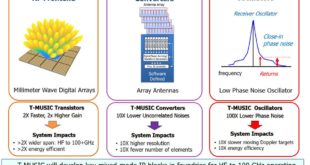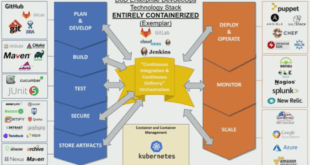Product Lifecycle Management offerings have helped companies manage their product lifecycles for decades, reducing costs, improving quality, and making customers happy. Silicon Lifecycle Management (SLM) is applying such processes in the semiconductor industry for the manufacture of silicon chips. Semiconductor development is currently in one of its periodic crises, …
Read More »Sales and operations planning (S&OP) to Integrated Sales, Inventory, Operations and Planning (SIOP) process
Sales and operations planning (S&OP) is an integrated planning process that aligns demand, supply, and financial planning and is managed as part of a company’s master planning. S&OP is designed and executed to support executive decision-making related to approving a feasible and profitable material and financial plan. The sales …
Read More »PCB Design consideration for aerospace and military applications
Printed circuit boards (PCBs) are the foundational building block of most modern electronic devices on which all of the other electronic components are assembled onto. A circuit card is a thin, flat piece of dielectric material that has conductive paths or traces etched on it. These conductive circuits – usually …
Read More »3D printing Scramjet engines
3D printing or additive manufacturing is ongoing revolution in manufacturing with its potential to fabricate any complex object and is being utilized from aerospace components to human organs, textiles, metals, buildings and even food. Additive manufacturing is defined by ASTM International as the process of joining materials together, layer by …
Read More »DARPA’s T-MUSIC developing revolutionary THz Mixed mode Integrated circuits and System on Chips(SOC) for Military Terahertz radar and Communications
Integrated circuits (ICs) are generally classified as digital (e.g. a microprocessor) or analog (e.g. an operational amplifier). Mixed-signal ICs are chips that contain both digital and analog circuits on a single semiconductor die. Mixed-signal ICs also process both analog and digital signals together. For example, an analog-to-digital converter is a …
Read More »Lean Six Sigma in Aerospace and Defense Industry ensures the highest level of cost-wise readiness consistency across the unit, quality, and production environments
Digital transformation has become the hottest buzzword of this decade. New technologies and tools are supporting the transformation journey of companies big and small as they compete to get a bigger slice of business in a fast-paced competitive environment. Although digital transformation fast-tracks a company’s growth, it has to be equally …
Read More »Programmable logic controllers (PLC)
Industrial control system (ICS) is a collective term used to describe different types of control systems and associated instrumentation, which include the devices, systems, networks, and controls used to operate and/or automate industrial processes. ICS are typically used in industries such as electric, water and wastewater, oil and natural gas, transportation, …
Read More »Medical Oxygen is a life-saving essential medicine, require new oxygen-generation-systems
Apart from its industrial usage, oxygen is used for various medical purposes – from general medicine administration to medical assistance and emergency procedures. Oxygen is a critical element for human life existence, and The timely availability of medical oxygen is a decider of life and death for the patient. …
Read More »DevSecOps for quick delivery of mission-critical capabilities
As the speed and frequency of releases increase, traditional application security teams cannot keep up with the pace of releases to ensure each release is secure. To address this, organizations need to build in security continuously across the SDLC so that DevOps teams can deliver secure applications with speed and …
Read More »DevOps running on Kubernetes, and Containers, is the Future of Software
DevOps is a software engineering culture and practice that aims at unifying software development (Dev) and software operation (Ops) and removing the traditional barriers between the two. DevOps is an ideology comprising three pillars—organizational culture, process, and technology and tools—to help development and IT operations teams work collaboratively to build, test, …
Read More » International Defense Security & Technology Your trusted Source for News, Research and Analysis
International Defense Security & Technology Your trusted Source for News, Research and Analysis





